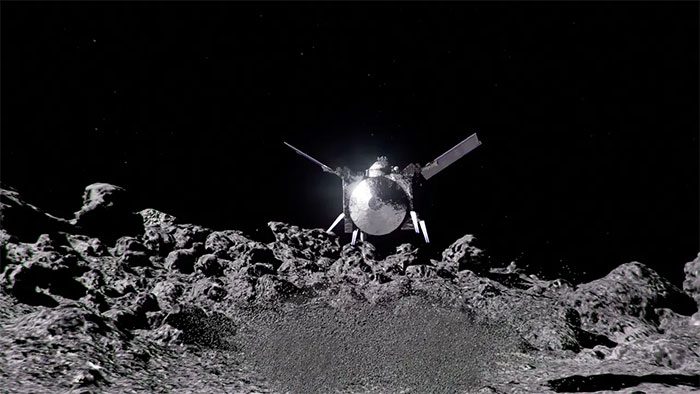NASA is monitoring this special event, although the asteroids pose no threat of colliding with Earth.
This week, Earth will “welcome” five asteroids passing by, one of which is as large as a football stadium.
The largest among them is asteroid 2008 OS7, which measures approximately 271 meters in diameter and was first discovered by NASA in 2008. It will pass by Earth on February 2, at a distance of 2.848 million kilometers, which is relatively close on a cosmic scale.

Nasa’s OSIRIS-APEX spacecraft will study asteroid Apophis as it approaches Earth in 2029 – (Image: NASA)
The Jet Propulsion Laboratory (JPL) of NASA has been continuously tracking the trajectory of 2008 OS7 due to its close proximity to Earth.
Just one day earlier than 2008 OS7, two other asteroids, 2024 BY and 2003 BM4, will also glide past Earth on February 1. Among them, 2024 BY, which is about the size of a house, will pass us at a distance of 2.4 million kilometers, while 2003 BM4, roughly the size of an airplane, will pass at a distance of 3.3 million kilometers.
Earlier, on January 28, asteroid 2024 AU4, measuring approximately 79 meters across, flew past Earth at a safe distance of 6.3 million kilometers.
On January 30, another asteroid, 2007 EG, which is nearly the size of an airplane, came a bit closer at a distance of 6.1 million kilometers.
To put these distances into perspective, NASA states that the average distance between Earth and the Moon is about 385,000 kilometers, while the distance between Earth and the Sun is approximately 150 million kilometers.
NASA notes that most near-Earth objects (NEOs) have orbits that do not come too close to Earth, hence they do not pose any collision risk.
However, some objects are classified as potentially hazardous asteroids (PHAs) when they are larger than 152 meters and come within 7.56 million kilometers of Earth.
Notably, Apophis, nicknamed the “God of Chaos” asteroid, is a significant PHA, measuring about 335 meters across. It is expected to pass extremely close to Earth, at a distance of 32,000 kilometers, in 2029.
NASA states that this will be the first time in Earth’s history that an asteroid of such size comes this close to our planet. In December 2023, NASA launched the OSIRIS-APEX spacecraft to study Apophis.


















































